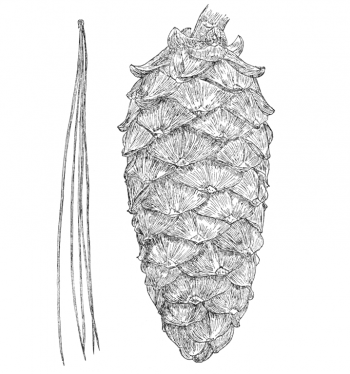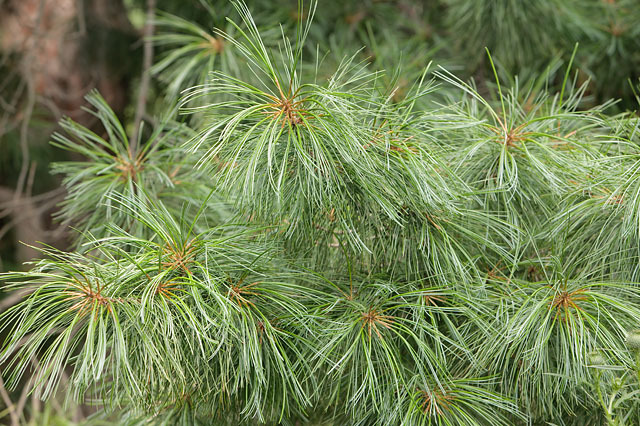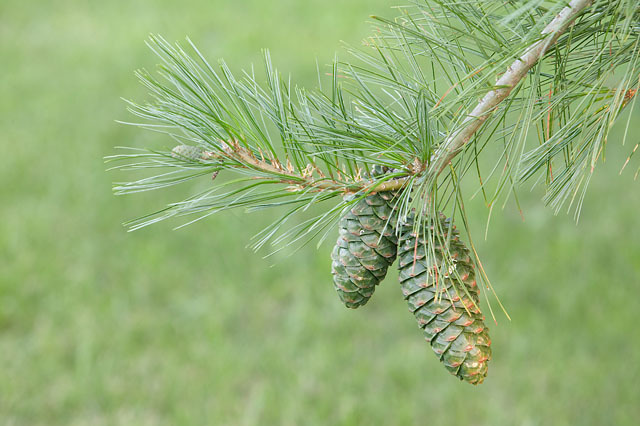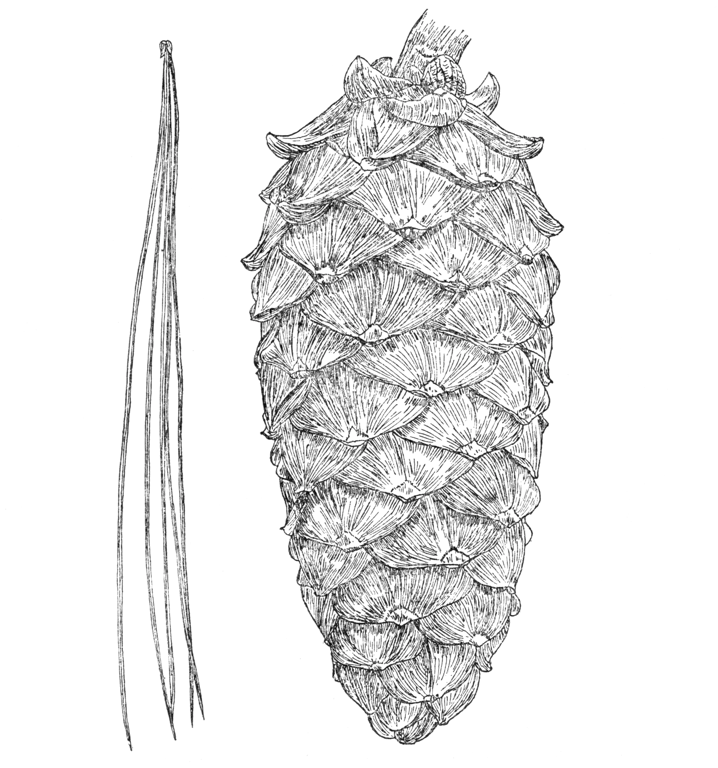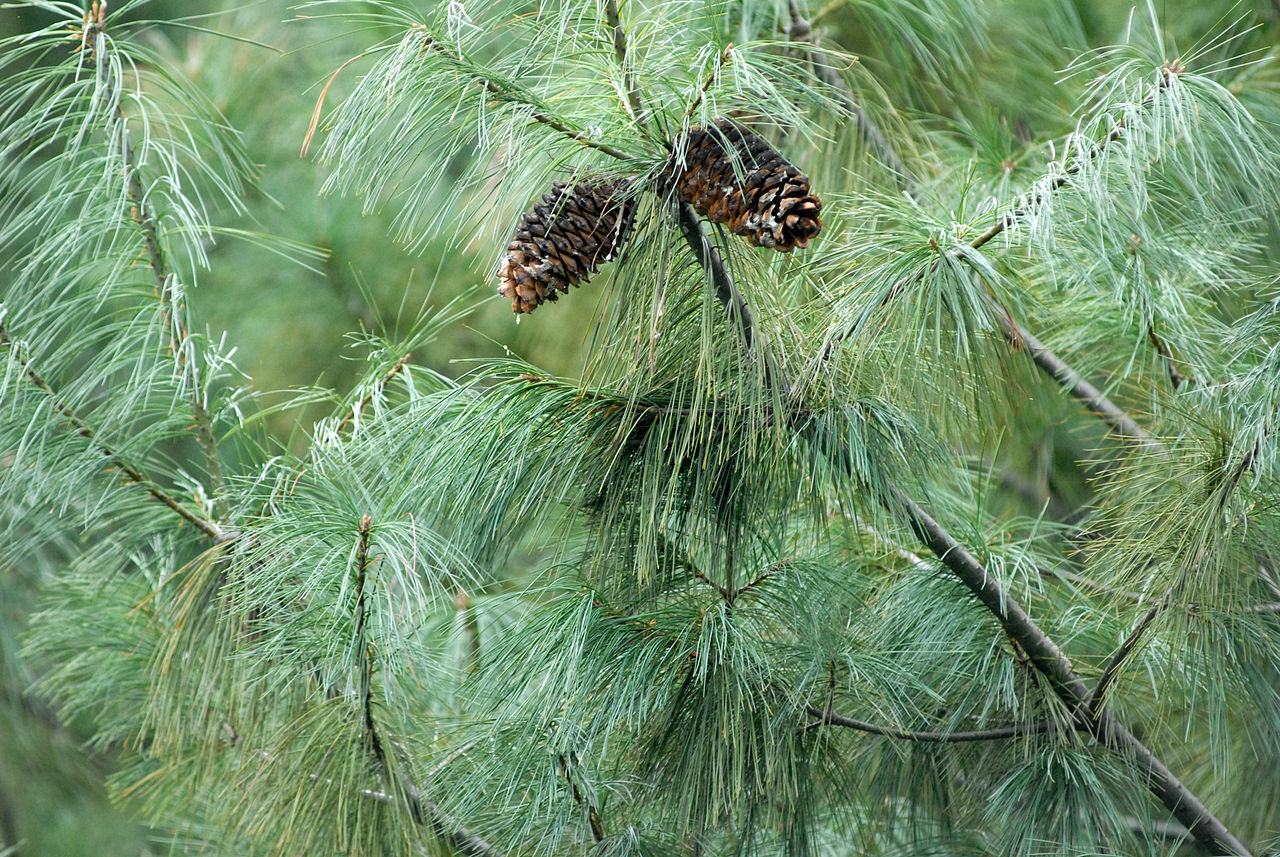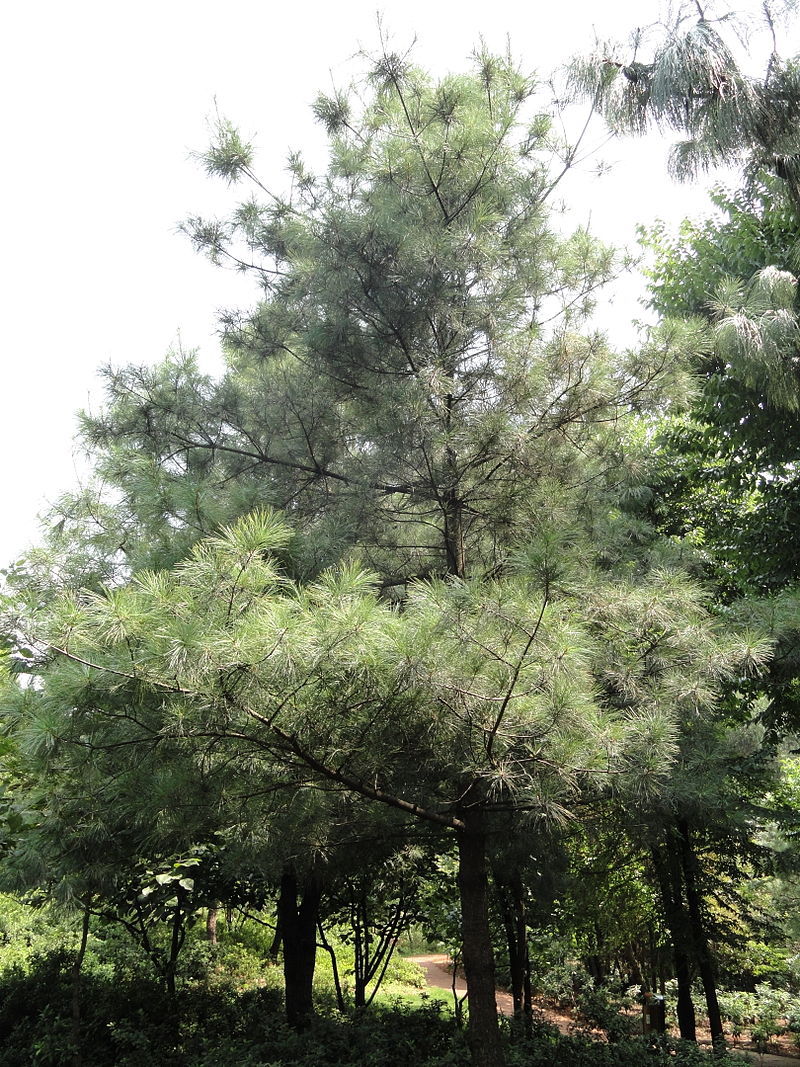subgenus Strobus (Lemmon), section Quinquefoliae (Duhamel), subsection Strobus (Loudon).
Pinus armandii, first described in 1884 by Adrien René Franchet (1834-1900), is commonly known as Chinese white pine, or as ŠŽŠ±±æ¾ (hua shan song) in the Chinese language. The epithet honors Père David Armand (1826 - 1900), a French missionary and naturalist who worked extensively in southwestern China. He collected the type specimen in Yunnan province.
Description. Chinese white pine is an evergreen coniferous species of tree that grows to mature heights of 115 feet (35 m) tall with a trunk 40 inches (100 cm) in diameter, measured at breast height. Its crown is conical in young trees with whorled branching, becoming rounded and irregularly branched with age.
- Bark is smooth, brownish-gray in color, becoming platy and fissured, blackish brown to grayish red brown, covered by thin, loosely appressed small scales with age. Outer bark is about 0.32 inch (8 mm) thick; inner bark is 0.32 to 0.6 inch (8 - l5 mm) thick, colored pale reddish white, and finely fibrous textured.
- Needles grow in fascicles of 5, with a quickly deciduous sheath. Needles are slender, 3.2 to 6 inches (8 - 15 cm) long, 0.04 to 0.06 inch (1 - 1.5 mm) thick, serrulate in texture, bright green in color, triangular in cross section, with 1 vascular bundle and 3 resin ducts, one medial, two marginal.
- Pollen cones are borne in spiral clusters at the base of new shoots. They are 0.6 to 1 inch (1.5 - 2.5 cm) long, colored greenish white with a reddish tip.
- Seed cones grow in clusters of 1 or 2, erect becoming pendulous from stout 0.8 to 1.2 inch (2 - 3 cm) long peduncles. They are 3.2 to 5.6 inches (8 - 14 cm) long, conical-cylindric shaped, often resinous, colored green when young, maturing golden brown, falling after seeds have dispersed.
- Cone scales are rigid, 1.2 to 1.6 inches (3 - 4 cm) long and 1 to 1.2 inches (2.5 - 3 cm) wide with a thickened triangular or rhombic apophysis; umbo is obtuse shaped, darker than the scales, without a prickle.
- Seed is obovoid shaped, 0.4 to 0.6 inch (10 - 15 mm) long, and wingless.
Distribution. This species is native to China: southern Gansu, central and northernwestern Guizhou, Hainan, southwestern Henan, western Hubei, southern Shaanxi, southern Shanxi, Sichuan, southeastern Xizang, and Yunnan provinces at elevations of 3,000 to 11,500 feet (900 - 3,500 m) above sea level; in northern and central Taiwan at elevations of 7,600 to 10,000 feet (2,300 - 3,000 m); and in northern Myanmar. It typicall grows in mixed conifer forests with species of
Abies, Picea, Pseudotsuga and (in southwestern Shina)
Larix; often on thin, rocky soils. The trees in Taiwan are var.
mastersiana; all others are var.
armandii.
Hardy to USDA Zone 7 - cold hardiness limit between 0° and 10°F (-17.7° and -12.2°C).
